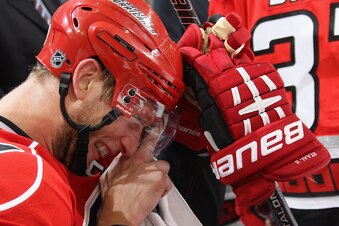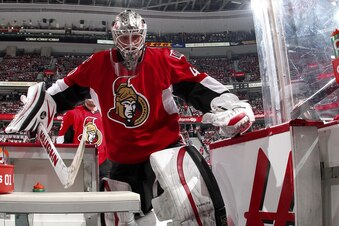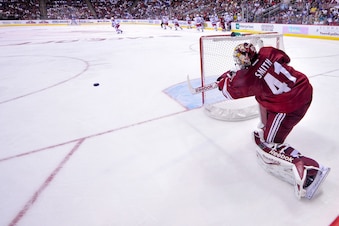WASHINGTON (NNS) -- The Secretary of the Navy has announced a new
Department of the Navy sexual assault survey for 2013, which started
Oct. 15, and can be taken online via any device that can access the
internet.
The Department of the Navy Sexual Assault Prevention and Response Office
(DoN SAPRO), which answers directly to Secretary of the Navy Ray Mabus,
created the survey to assess the Department's progress, and learn what
more Sailors and Marines think should be done to fight sexual assault.
"We can't help them if we don't know what the issues are, and we don't
know if our training is working," said Jill Loftus, director of DoN
SAPRO. "If they think our training is horrible, then we'd like to know
that, so that we can switch gears. We'd also like to know if they think
that it is worthwhile and if they're learning stuff because then we can
continue in that vein."
From previous surveys, DoN SAPRO has learned that the majority of sexual
assaults in the Navy and Marine Corps happen to 18 - 24 year-olds in
social settings involving alcohol, and that the assaults usually occur
at A-schools right after boot camp, or at the first duty station.
"We've used that information to set up pilot programs," said Loftus.
"Our Great Lakes experiment that we've been very successful with came
from information we learned from our surveys."
The experiment targeted Training Support Center Great Lakes, mainly the
Sailors who have recently graduated boot camp. The program brought
together the Naval Criminal Investigative Service (NCIS), local hotels,
commanding officers, and others to put an end to the risky situations
Sailors may encounter.
The program also incorporated bystander intervention training, "No
Zebras, No Excuses" training, Sex Signals training, a large group
presentation on sexual assault and two small-group presentations with
discussion groups.
Referring to Great Lakes, Loftus said, "Using anonymous surveys, we have
seen a 60 percent reduction in sexual assaults over the past 34
months."
This year's survey incorporates questions from previous surveys,
Department of Defense surveys and academic surveys. Pulling from the
surveys and lessons learned, DoN SAPRO made the survey more concise to
pinpoint the information they're trying to find, while taking less time
from Sailors and Marines.
"The 10-minute survey that's online focuses directly on the issues
surrounding sexual assault, and addresses issues such as perceptions,
attitudes of Sailors and Marines about the issue of sexual assault,"
said Cmdr. David McKay, a research psychologist at DoN SAPRO. "We're
also interested in understanding reporting behaviors and attitudes about
reporting.
"Sexual assault is one of the top priorities of the Secretary, and
should be a top priority for all Sailors and Marines, to try to figure
out how to combat sexual assault. The survey is important because it
does a couple things. One, it helps us gauge progress on the different
interventions we're implementing. Secondly, it provides an opportunity
for Sailors and Marines to speak directly to the Secretary about their
experiences about sexual assault."
The 21st Century Sailor and Marine Office (N-17) lists combating sexual
assault as one of its main priorities. Rear Adm. Sean S. Buck, the
director of N-17, spends time with Sailors to get feedback.
"When I visit with Sailors, I am constantly asked - 'what else can I do
to make a difference?' Besides looking out for your shipmates and
actively intervening when necessary, surveys like this are your chance
to do something, to make your voice heard," Buck said.
Although the survey is a chance for Sailors and Marines to be heard, it
is completely anonymous. No one will get a reminder to complete the
survey because no one is tracking the individuals who take the survey.
"We won't know if you haven't filled out the survey," said Loftus.
"There's no fingerprint. There's no electronic tag to our survey. It
can be taken from a smart phone; it can be taken from a tablet; it can
be taken at the Apple store; it can be taken at your desktop or at home.
We have no idea who you are and so you won't get that email reminding
you to take it."
Loftus said that some of the initiatives that Mabus has instituted,
based on previous survey results, included doubling the number of sexual
assault investigators at NCIS, increasing the number of sexual assault
response coordinators, 66 full-time victim advocates that are civilians
trained as counselors, who will help victim support. The JAG is also
instituting a victim's legal counsel who will help victims through the
process and the Navy is deploying civilian resiliency counselors, who
are also certified SARCs, on every big deck.
"I think that the Navy and the Marine Corps are really spending the
resources and putting the attention on prevention, victim care and
support," said Loftus. "We think that if Sailors and Marines are honest
and forthright in taking this survey, and we get enough of them, that
we'll be able to show the nation and other service people that we're
really taking this seriously, that we care, and that we don't want
victims. We want to prevent sexual assault. This is a way for every
member of the service to help us do that."
The survey is available at www.donsapro.navy.mil/donsas.html.
The password for all military participants is 2013Survey and the survey will be available through Jan. 6, 2014.


